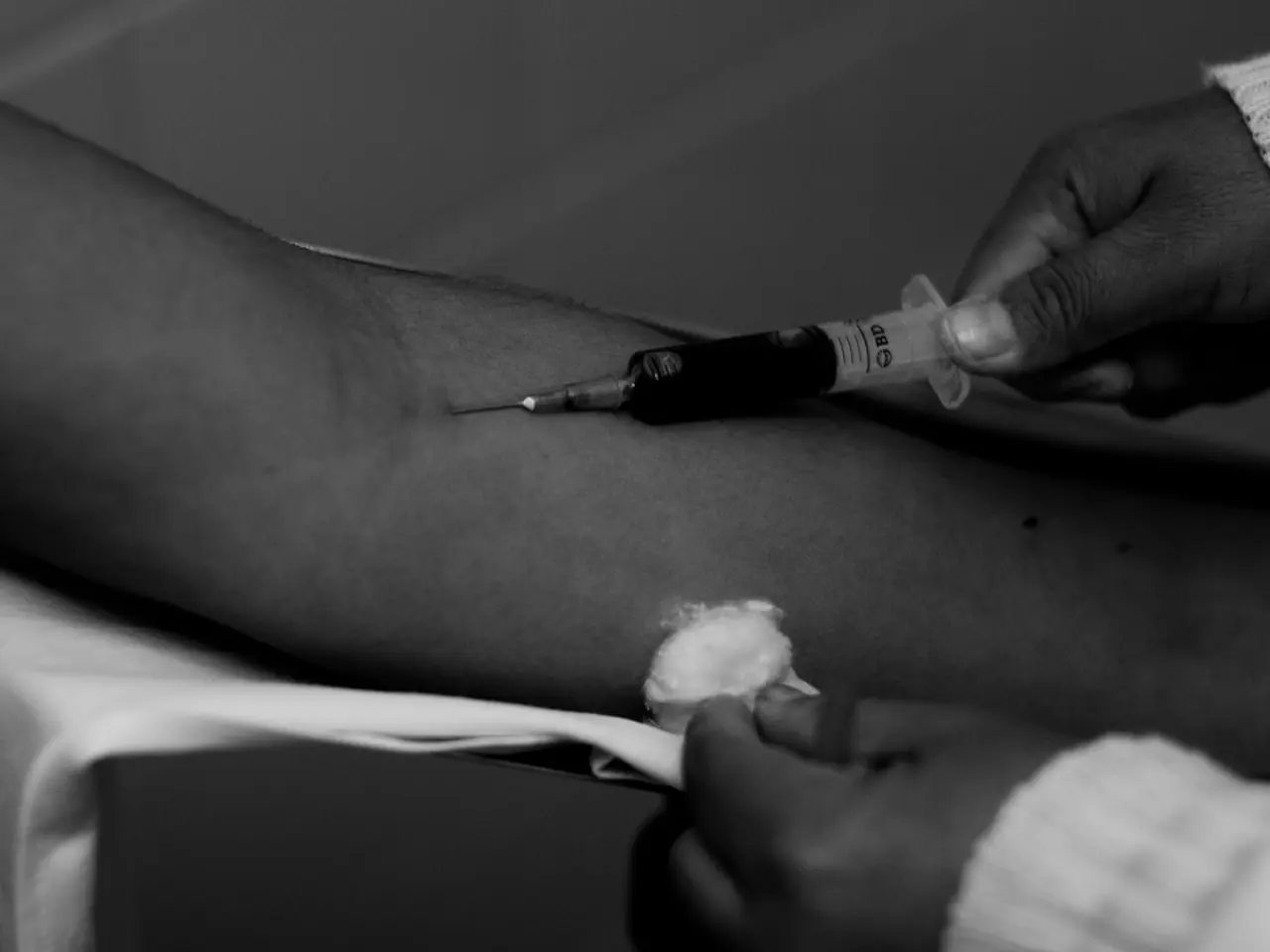Injection within Muscles: Site selection and application procedures
For individuals managing multiple sclerosis or rheumatoid arthritis, self-administering intramuscular (IM) injections at home may become necessary. This article provides expert steps for a safe and effective process, focusing on proper sites and precautions.
### Steps to Self-Administer an IM Injection
1. Wash your hands thoroughly with soap and warm water for at least 20 seconds to reduce infection risk. 2. Gather all supplies, including a needle and syringe with medication, alcohol wipes/pads, gauze or cotton ball, bandage, and a sharps container for safe needle disposal. 3. Prepare the syringe and medication by cleaning the vial’s rubber stopper with an alcohol swab, injecting air equal to your medication dose, drawing the prescribed medication into the syringe, removing air bubbles, and ensuring the medication is at the correct dose. 4. Select the injection site based on accessibility and muscle size. Preferred sites include the thigh (vastus lateralis), hip (ventrogluteal), and upper arm (deltoid muscle). 5. Clean the injection site with an alcohol wipe and allow it to air dry to avoid irritation or infection. 6. Administer the injection by spreading or pinching the skin as recommended by your healthcare provider, inserting the needle at a 90-degree angle straight into the muscle, pushing the plunger slowly to inject the medication, leaving the needle in place for about 5 seconds to ensure full delivery, withdrawing the needle quickly, and applying gentle pressure with gauze. 7. Dispose of the needle safely in a puncture-resistant sharps container. 8. Apply a bandage if needed.
### Preferred Injection Sites for Intramuscular Injection
- The thigh (vastus lateralis) is easy to reach and visualize, suitable for adults and children. - The hip (ventrogluteal site) is preferred for adults due to fewer major nerves and vessels, safer than the dorsogluteal area. - The upper arm (deltoid muscle) is not recommended if the muscle is very small or the person is very thin, as it is harder to self-inject.
Note: For patients with multiple sclerosis or rheumatoid arthritis, muscle atrophy or pain may influence site selection. Consult your healthcare provider for personalized guidance.
### Precautions and Tips
- Choose a muscle site with enough bulk and avoid areas with scars, bruises, or inflammation. - Relax the muscle to minimize pain and aid absorption. - Rotate injection sites to prevent tissue damage or irritation. - Use a new, sterile needle and syringe for each injection. - Do not reuse needles or syringes. - Dispose of sharps properly to prevent injury or infection. - If you experience excessive pain, swelling, redness, or signs of infection at the injection site, contact your healthcare provider immediately. - Follow specific instructions provided with your medication, especially if using prefilled syringes or auto-injectors.
By following these guidelines, individuals can safely and effectively self-administer intramuscular injections at home. Intramuscular injections are used by doctors to administer vaccines and certain other drugs, offering benefits over oral, intravenous, and subcutaneous delivery methods. Healthcare professionals should provide training and education before asking people to administer intramuscular injections to themselves or another person.
- It's crucial to remember that these steps aim to give a general idea; individual circumstances may differ, and personalized advice from a healthcare professional is essential.
- In the realm of health-and-wellness, self-administering IM injections for predictive conditions like HIV disease, multiple sclerosis, neurological disorders, ulcerative colitis, Crohn's disease, migraine, depression, macular degeneration, dermatitis, atopic dermatitis, obesity, cancer, and other medical-conditions is necessary for some.
- Science continues to advance, enabling improvements in medical practices, including developing more accurate and efficient predictive models for diagnosing and treating various health-related issues, ultimately contributing to overall health-and-wellness improvement.




